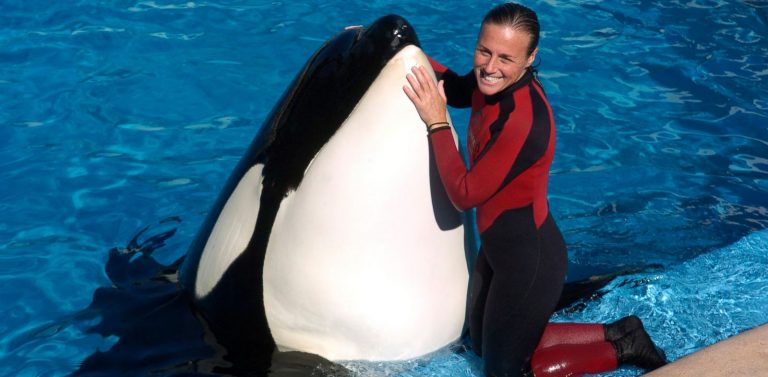BRONX, NY- A few weeks ago I watched a documentary produced by CNN titled Blackfish. It followed the story of Tilikum, the largest orca held in captivity. Former SeaWorld trainers shared their experiences of working with Tilikum and the treatment of other orcas in the aquatic theme park. It was not a pretty story. SeaWorld doesn’t rescue the animals for “conservation” purposes, but business and marketing. Blackfish goes more into detail about how the orcas are abused, the physical and psychological damages of captivity, and the drama that follows Tilikum after three incidents of attacking his trainers.
Let me address that I prefer to use the word orca instead of killer whale. There is nothing “killer” about these whales at all. Yes, it is not smart to disturb a pod of orcas while they are hunting, but, these whales are social and have the same emotions as humans. There is no record of an orca attacking a human in the wild. They use echolocation to hunt prey and communicate. The misinterpretation of the term “killer whale” came from the fact that orcas are toothed whales. Most whales have baleen. Orcas feed on seals, sea lions, fish, squid, birds, seals, dolphins, and other whales, mostly the young ones (Wildlife Explorer).
As a child, I never had a good feeling about aquariums (and it is not because of my fear of sharks). The aquatic animals such as penguins, walruses, and otters seemed depressed, and I always thought to myself “don’t the employees ever set them free?” At 12 years old I went on a family trip to SeaWorld. Something did not feel right the moment I stepped foot in the theme park. The whale tanks were under renovation at the time, so I did not get to see the orcas up close, but I did experience the Shamu show and I was not entertained. The tanks looked too small for the whales from where I was sitting. The only thing I bought from SeaWorld was a book on Marine animals. After watching Blackfish a decade later, I was proven my instincts were right.
According to the documentary, orcas are taken away from their families in the wild by SeaWorld. They pick out the calves and sometimes adult orcas are killed in the process. Tilikum was about three years old when he was separated from his pod. In his first home, Tilikum and two other orcas were put in a swimming pool and then locked up in steel boxes in the dark, at night. Tilikum was already a big whale when he arrived at SeaLand in Canada. The closed space triggered him to drown a part-time employee. Rather than SeaLand setting Tilikum and the other two orcas free, they sold them to SeaWorld Orlando. Life became worse for Tilikum. He was deprived of food, the other orcas injured him, and he was too big to swim in the tank. Imagine being in a bathtub for the rest of your life? This caused a psychological and physical effect on Tilikum. Unfortunately, it also led to two more incidents with SeaWorld trainers, including the death of Dawn Brancheau.

The first question that crossed my mind was “why hadn’t SeaWorld euthanized Tilikum after what happened to Dawn?” I am not for SeaWorld killing Tilikum at all, and I am not saying it was Dawn’s fault either. I just found it strange that Tilikum was still alive. Sadly, putting animal to sleep is the first resort in many enclosures that have “incidents.” My question was answered in the documentary. Tilikum’s sperm is still valuable. All he is to SeaWorld at this point is a sperm donor. That’s it! Tilikum is currently in a small tank swimming in circles at SeaWorld alone. No right to his freedom. I know I would go crazy in an environment that was not meant for me. Tilikum has scars from the physical damage of other orcas, including a collapsed dorsal fin.
Other orcas in captivity have suffered too. Calves born in captivity are separated from their mothers and die a few months later. Tilikum wasn’t the only orca to go crazy. There have been more reports hidden by SeaWorld of orcas injuring trainers. These orcas need to be free, especially Tilikum, and SeaWorld should be ashamed of themselves. Former SeaWorld trainers have spoken up about the treatment of the whales as well as other aquatic animals. It is time we join their voices and help bring these animals back to their homes.
Video: MovieClips Trailers
Note: Tilikum passed away at SeaWorld Orlando on January 6, 2017. He never returned to the ocean.
Last Update: September 6, 2021
